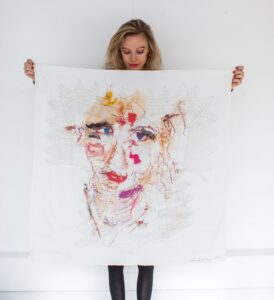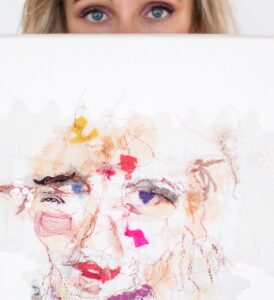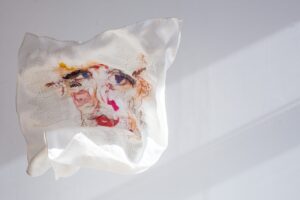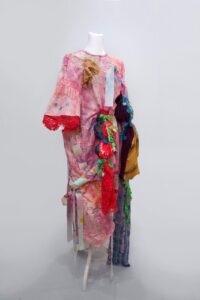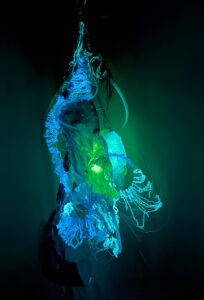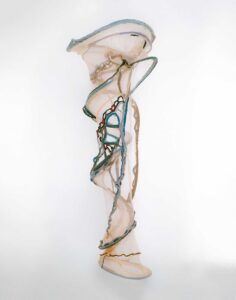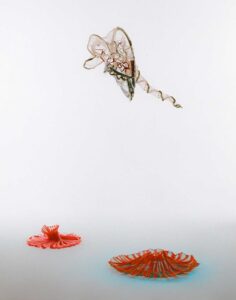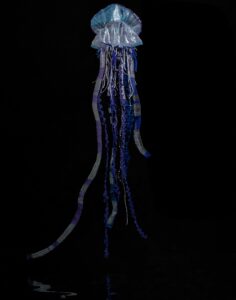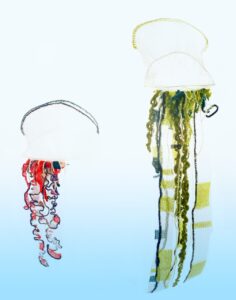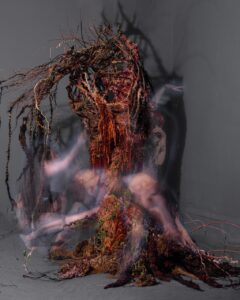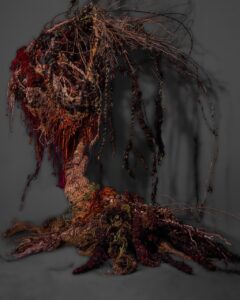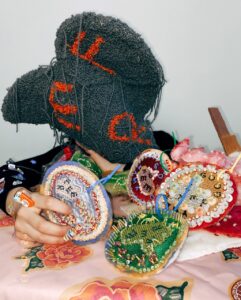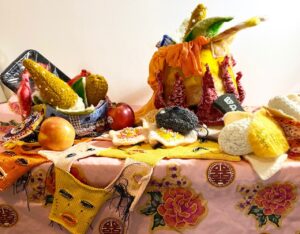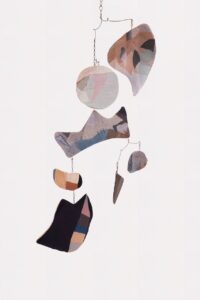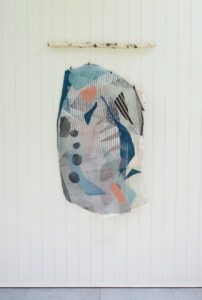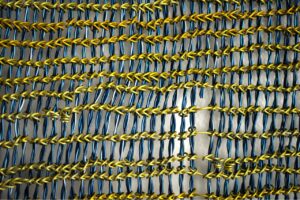
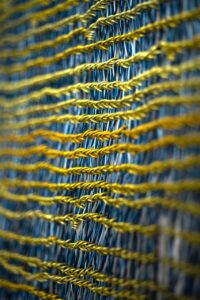
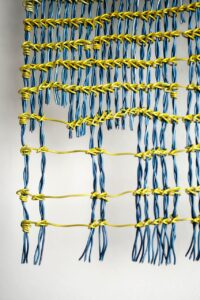
One of the easiest way to get your art work ‘out there,’ is through social media, but making your work look as good on a screen as it does in reality can be tricky. American artist Becca Barolli has such a beautiful way of presenting her work I asked her to give some tips.
About Becca Barolli
I was born and raised in Connecticut and am currently based in the Bay Area. I moved out here to attend graduate school at the San Francisco Art Institute working primarily in sculpture. Before that I completed a BFA in Photography from the University of Connecticut.
My sculptural work has always been heavily rooted in textiles. The techniques I use most frequently are knotless netting, braiding and hand tied latch hook knots except I use steel wire instead of traditional fibers. For the past few years I’ve also been doing antique rug restoration, so I’ve been able to take what I’ve learned from that into my art practice by incorporating techniques like twining and setting up foundation structures.
Recently I’ve been learning how to anodize aluminum wire, which is a process that uses electricity to prepare the wire to then be dyed. I’m really excited about this process because it not only provides a way for me to introduce color to my work, but it feels very similar to the process of dyeing fibers.
I use these techniques to make abstract sculptures that focus mainly on obsession while embracing both a desire for control and an acceptance of chaos. For the piece First Born Son, I was thinking about the expectations people sometimes have for this prized position. The term “golden child” kept coming to mind, which is a role associated with the narcissist family system that refers to a child that is essentially favored and attributed to success. The foundation of braids in this piece start breaking off as the twining continues across. To me this signifies the burden of impossible expectations as well as a need to hold things together and press on despite perceived failures, but the beauty of abstract art is that the viewer will always add their own interpretations and meaning to the work.
5 tips for photographing artwork:
- Lighting and focus are your main priorities.
You want to try to get even lighting and a good exposure with everything in focus so you have great portfolio images. I use AlienBees strobe lights with soft boxes to light my work. Having a lot of available light makes it possible to shoot at a higher f/stop so you can get as much in focus as possible.
- Colour correct your images.
You always want to set your white balance for every different lighting situation you are in. I shoot in RAW and take a photo of a WhiBal reference card for each lighting scenario so I can easily adjust the color accurately.
- Take more photos than necessary.
When you’re documenting artwork for a portfolio or exhibition application, typically you will want one image that shows the piece clearly in its entirety. I suggest taking this photo at least a few times so you can sort through them afterward and select the one that turned out the best. I also highly recommend taking detail photographs even though you may not always get to use them for applications. Gorgeous detail shots can be used for social media, business cards, show fliers, art books, the list goes on. Especially if your work is 3D, tactile or very intricate, these images provide a lot of information for someone who is unable to see it in person.
- Clean up your images.
Once you’ve selected your strongest images, clean up any distractions they might have like marks on the wall or scuffs on the floor. I use a combination of the spot healing brush, patch tool and clone stamp in Photoshop to remove anything that might detract focus from the work.
- Bad photos are better than no photos.
Documenting artwork is hard, especially if you’re new to this process. I’ve been photographing my work for over a decade and still think there are so many areas where I could improve. I understand not being able to afford hiring a professional photographer and truly believe that you’ll see and learn more about your work by photographing it yourself. Sometimes you may need to reshoot a piece completely because you just didn’t get a good image and that’s better in the long run because you will learn something new from the process every time you try.
You can see more of Becca’s work at https://www.instagram.com/beccabarolli/
You can also read more photography tips from photographer Katie Vandyck here https://www.textilecurator.com/tips-to-photograph-textile-art/








